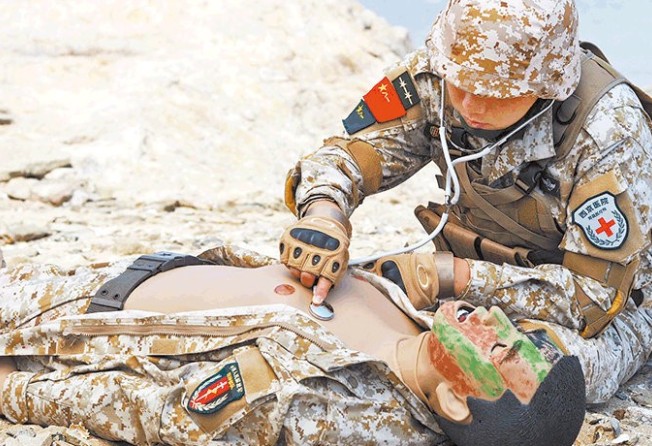Chinese military develops its first robot patient as it seeks to prepare medics for battlefield role
- ‘Warrior’, a medical simulator complete with pulse and beating heart, ends PLA’s reliance on imports to train medical staff
- Mannequin was created as part of drive to overhaul military medical staff as Chinese armed forces seek to become a 21st century fighting force

The Chinese army has created a lifelike robot mannequin, complete with a pulse and beating heart, to help train its medics to treat battlefield wounds, according to the PLA Daily.
The medical simulator, named “Warrior” is even able to give medics feedback on how well they are treating the wounds and is equipped with more than 30 sensors to help simulate more than 300 battlefield injuries.
The PLA Daily, the armed forces’ official newspaper, reported in the May that the model had been designed as part of a wider overhaul of military medical training and it would be used to simulate almost all the battlefield traumas a soldier could experience.
Besides having its own pulse and heartbeat, it is able to breathe, cough or moan while trainees can also monitor its blood pressure.
It is the first domestically made model of its kind, with China’s army medics previously having to import medical training dummies from abroad.
It was designed by a research team, led by Zhao Yimin, a professor in China’s Fourth Military Medical University, which has also produced a new curriculum, training facilities and equipment as the People’s Liberation Army seeks to overhaul its medical training and capabilities.
“Compared with our weaknesses in technology and equipment, what’s more scary is the backwardness of our mindset,” Zhao said.

The drive to improve the training of battlefield medics is part of a wider push to modernise the armed forces and enhance their combat capabilities.
Zhou Chenming, a Beijing based military expert, said China had not paid enough attention to the training of battlefield medics until the death of several Chinese peacekeepers on UN missions in South Sudan and Mali.
“China lags far behind in medical training across all disciplines, especially when considering China has been at peace since the Sino-Vietnamese war in 1979,” Zhou added.
A former deputy PLA commander echoed Zhou’s view and said the battlefields of the future would feature hi-tech weaponry that required better quality medical care.
“Both China’s field medical stations and army hospitals need to improve, although the Chinese army has made some progress in this regard,” he said.
By contrast the US invasion of Iraq in 2003 gave its military a greater sense of urgency when it came to improving its battlefield medical care.
The US Army Research Laboratory developed the world’s first Stand Alone Patient Simulator in 2004 to help train military medics, a model that has since been made commercially available through Medical Educational Technologies.